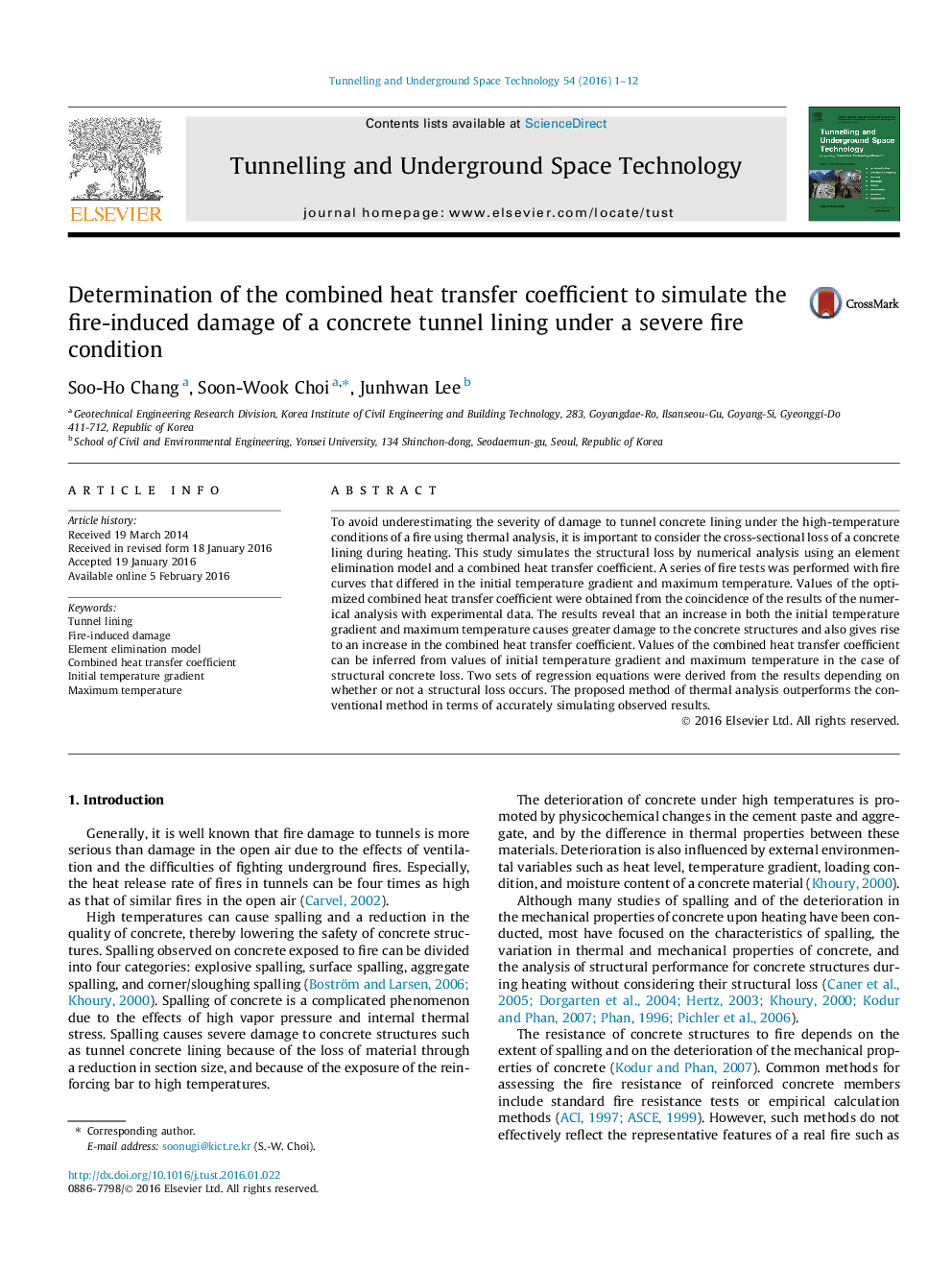| Article ID | Journal | Published Year | Pages | File Type |
|---|---|---|---|---|
| 312144 | Tunnelling and Underground Space Technology | 2016 | 12 Pages |
•Fire tests are performed under different initial heating rates and peak temperatures.•The results of the thermal analyses using EEM are compared with fire test results.•The combined heat transfer coefficients are derived from the comparison results.•We obtain the optimized combined heat transfer coefficients in specific fires.•Two regression equations are derived from whether or not a structural loss occurs.
To avoid underestimating the severity of damage to tunnel concrete lining under the high-temperature conditions of a fire using thermal analysis, it is important to consider the cross-sectional loss of a concrete lining during heating. This study simulates the structural loss by numerical analysis using an element elimination model and a combined heat transfer coefficient. A series of fire tests was performed with fire curves that differed in the initial temperature gradient and maximum temperature. Values of the optimized combined heat transfer coefficient were obtained from the coincidence of the results of the numerical analysis with experimental data. The results reveal that an increase in both the initial temperature gradient and maximum temperature causes greater damage to the concrete structures and also gives rise to an increase in the combined heat transfer coefficient. Values of the combined heat transfer coefficient can be inferred from values of initial temperature gradient and maximum temperature in the case of structural concrete loss. Two sets of regression equations were derived from the results depending on whether or not a structural loss occurs. The proposed method of thermal analysis outperforms the conventional method in terms of accurately simulating observed results.
